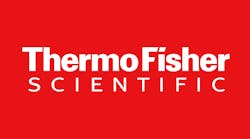As far as M&A deals go, 2019 has started off with a boom. In fact, two of the first big deals announced — Bristol-Myers Squibb’s $74 billion purchase of Celgene and AbbVie’s $63 billion takeover of Allergan — put 2019 on track to be a record year for M&A activity.
All told, the top 10 deals announced in the first half of this year also have a total value up 47 percent from of the top 10 deals in the first half of 2018. And Chimera Research Group estimates that 14 of the biggest biopharma deals in the first half of 2019 are worth a whopping $173 billion — not including some of the earlier announced deals that closed this year (such as Takeda’s $58.6 billion acquisition of Shire).
What’s behind all the deal making?
According to Amanda Micklus, an analyst with Informa Pharma Intelligence, a pharmaceutical research and analysis firm, many of the key drivers are similar to what the industry has seen in past years, but emerging trends are bringing companies together as well.
Photo courtesy of Unsplash
New therapeutic areas
Hooking up with another company has traditionally been a way for top pharma players to expand their portfolio into new therapeutic areas. In recent years, cancer care has been top-of-mind for pharma companies as several groundbreaking treatments, such as immuno-therapies, have burst onto the scene.
“Oncology-focused deals have been standing out among the major deals this year,” Micklus says.
Micklus points out that some of the sector’s most notable cancer-driven acquisitions have included BMS’ deal with Celgene, Pfizer’s $11 billion acquisition of oncology specialist Array, Eli Lilly’s $8 billion purchase of Loxo Oncology and Merck’s $2.2 billion buy of Peloton Therapeutics.
Besides oncology, another therapy area behind big deals lately is immunology/inflammation, as evidenced by Novartis’ deal with IFM, along with several assets in that area that BMS is also gaining from Celgene. But companies have also been looking to get their feet wet in other hot markets such as gene therapies. One of the biggest deals in that arena so far is Roche’s $4.3 billion merger with Spark Therapeutics.
Micklus notes that gene therapies are not only bringing drug developers together, but creating a wave of mergers throughout the supply chain. This year, Thermo Fisher announced that it is buying Brammer Bio, a viral vector manufacturing company for gene therapies. Drug delivery powerhouse Catalent also struck a $1.2 billion deal this year to buy Paragon Bioservices, another viral vector manufacturing company.
The patent factor
With scores of blockbuster drugs falling off the patent cliff in the next few years — AbbVie’s $19 billion-a-year Humira is already facing biosimilar competition in the EU and will face it in the U.S. in 2023 — pharma companies are also looking for new drivers of revenue growth.
Micklus notes that companies are looking for ways to “diversify portfolios and bring in more marketed products that have already have established sales.”
Back to basics
In decades past, pharma companies opened up their portfolios to different market segments like consumer goods, animal health and medical devices. Now, many big name companies are divesting their non-pharma business and refocusing on making breakthrough drug treatments.
“A lot of these big pharma companies inherited these businesses through other mega deals in the past and they have tried to participate in these markets but it’s a total different type of regulatory environment, the patent life for products is different, and it’s just a different landscape,” Micklus notes. “Now they are returning to pure play pharma and innovative drug development.”
Smaller is sometimes better
Mega mergers are nothing new in pharma. In fact, pharma has had more $40 billion-plus deals in the last 10 years than any other industry, according to Bloomberg.
But now the emphasis is on “bolt-on” acquisitions of smaller biotech startups.
“I think we’re going to see a slow down in mega mergers,” Micklus predicts. “Anecdotally and from what I’ve seen, mega mergers haven’t done great things for R&D productivity. I think instead we’re going to see more bolt-on deals that are therapy driven.”
Innovative partnerships
Pharma companies are not also just gobbling up the buzziest biotechs on the scene. Often, they’re striking different kinds of partnership deals that allow them to invest in the company, and bring their commercialization and marketing know-how to the table, while letting the smaller company maintain independent operations.
One example is Gilead’s recent announcement that it is entering a nearly $5 billion research and development collaboration with Galapagos, which specializes in small molecule treatments for inflammation, fibrosis, osteoarthritis and more. As part of the deal, Gilead will gain access to Galapagos’ portfolio of compounds and drug discovery platform, while Galapagos will receive an investment that allows it to expand its R&D.
In a way, Micklus says that these deals show that Big Pharma companies understand the importance of allowing startups to keep their innovative biotech culture even when they’ve entered into a deal with a major company.
Digital health
With digital innovations at the forefront of changes within pharma, companies are also looking for deals that will give them an edge with the latest tech.
Some pharma companies are striking partnership deals with companies that offer AI, machine learning and other tech advances to improve their own capabilities in areas such as drug discovery and clinical trials.
In other cases, medical tech companies are also joining forces to create a more robust entity. In June, Dassault Systems, a French software company, made a deal to buy Medidata for $5.8 billion. New York-based Medidata, which provides cloud-based and software services for clinical trials and works with 18 of the top 25 pharma companies.
Speedbumps?
With the pharma industry — and in particular, drug prices — in the national spotlight, political or regulatory changes could potentially tone down this M&A party. At present, legislative leaders from both sides of the aisle are floating several different kinds of regulations to bring down the price of pharmaceuticals but it’s unclear what the impact of these potential new rules could be on the industry.
For now, Micklus says “pharma companies should brace themselves for changes.”
“I don’t know if any kind of action on drug pricing is going to deter M&A, but there could be some action on that front soon,” she says.






